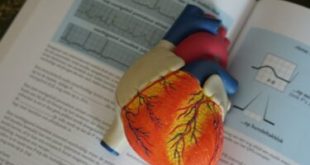Skin cancer, though uncommon is increasing. It can easily be detected externally by regular visits to the dermatologist. The whole body will be examined and suspicious lesions will be frozen or biopsied, depending on their appearance.
Types of Skin Cancer
There are three major types of skin cancer –
l Basal cell carcinoma – This type of skin cancer usually appears on the surface of the skin. It is limited to the upper layers of the skin. It is not invasive and easy to treat via surgery.
l Squamous cell carcinoma – It is commonly found in the areas of the body that are exposed to friction, carcinogenic substances and in individuals with genetic predisposition to cancers.
l Melanoma – Melanoma can develop anywhere in your body; it usually develops from the cells that give your skin colour- melanocytes. It is the most aggressive form of skin cancers – and is dangerous. Early detection is key to prevent it from spreading.
Are bleeding moles a common sign of the disease?
Irregular moles, freckles, or warts are common signs of skin cancer that are present on the skin and can appear alone or in groups. They are usually black or dark brown and can also develop as a pimple-like bump on the skin due to which they are easily ignored or dismissed. The majority of the moles are non-cancerous, and it is normal to have 10-40 moles from early childhood to 25 years of age.
As a person reaches adulthood, they may experience sudden changes that are evident in the structure of the moles in terms of their colours, size, and texture. In some cases, hair may also develop in the mole whereas in some cases the moles, freckles, or warts may slowly disappear.
Therefore, observing your moles and identifying the signs and symptoms of skin cancer is important. You may get worried while differentiating between a mole or a pimple and may self-diagnose or misdiagnose thinking it as a sign of cancer.
Identifying moles depends on the size, colour, height and shape. Bleeding moles are more dangerous and if they ooze, itch or suddenly become painful or tender then you should consult a dermatologist.
In case the colour of the wart or moles is distinct from that of each other in terms of diameter, evolution or colour then it may be non-cancerous. If the moles or warts are red, white, pink or are appearing on the neck or face with changes in size, shape and colour then it is advisable to have them checked by a dermatologist.
Prevention is better than cure in cases of skin cancer – regular skin checks with your dermatologist is key in early detection of skin cancers.
How can you detect skin cancer at home?
There are several easy ways through which you can detect potential cancerous growth at home. This includes the ABCDE test –
l A- Stands for asymmetry test where you should look out for moles that are uneven or asymmetrical
l B – Stands for the border. In this, you need to check for irregular borders on moles.
l C – Is for colour and melanomas range from white, pink, black, blue, or red.
l D – This is for diameter where you should look out for moles that are larger than 1/4 inch or are the size of a pencil eraser which may indicate the emergence of melanoma.
l E – Means evolving and you should keep an eye out for moles that are changing size, shape, or symptoms like itching, pain, or bleeding.
Skin cancer also doesn’t always appear on the skin and can manifest near the lungs causing shortness of breath. If melanoma appears on the head, then it can lead to headaches or vision changes. If diagnosed early, then the 5 -year survival rate in skin cancer is 99% and is a treatable condition, but if left untreated it can be fatal. It is important to regularly examine your skin for any signs of cancer.
Authored by Dr. Shireen Furtado, Consultant – Medical & Cosmetic Dermatology, Aster CMI Hospital
 Newspatrolling.com News cum Content Syndication Portal Online
Newspatrolling.com News cum Content Syndication Portal Online






